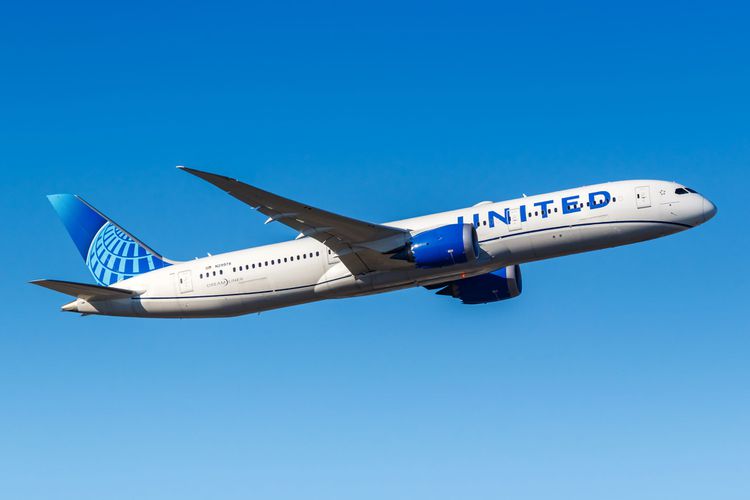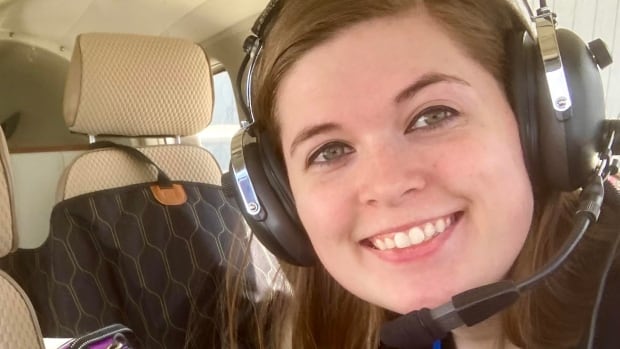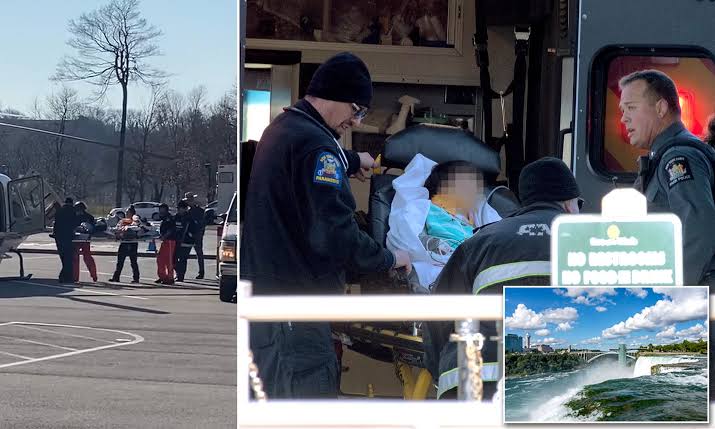United Plane Appears to Catch Fire Before Takeoff in Texas, Passengers Evacuated onto Tarmac in Latest Scary Incident
United Plane Appears to Catch Fire Before Takeoff in Texas, Passengers Evacuated onto Tarmac in Latest Scary Incident
In a harrowing scene that unfolded at George Bush Intercontinental Airport in Houston, Texas, on February 2, 2025, a United Airlines flight was forced to abort its takeoff after flames erupted from one of its engines. The terrifying incident occurred moments before departure, with passengers onboard Flight 1382 witnessing smoke and fire spewing from the right wing. Swift action by the flight crew and ground emergency services ensured all passengers were evacuated safely. The incident has once again raised serious concerns about airline safety protocols, aircraft maintenance, and the recent string of aviation-related emergencies that have captured global attention.
A Routine Morning Turns to Panic
United Airlines Flight 1382 was scheduled to depart from Houston to New York’s LaGuardia Airport, carrying 167 passengers and 6 crew members. The aircraft, a Boeing 737-900, had taxied onto the runway and was preparing for takeoff when a loud bang was reportedly heard from the right side of the aircraft. Immediately afterward, thick black smoke began billowing from the right engine, followed by visible flames.
What was supposed to be a standard early-morning departure quickly descended into chaos. Passengers sitting on the right side of the plane saw the fire and began alerting others. Panic swept through the cabin as some feared the worst. “People were screaming, crying, and some were already unbuckling their seat belts before we even came to a full stop,” said one passenger.
The pilots, trained for emergency situations, halted the takeoff sequence immediately and initiated emergency protocols. A flight attendant’s calm voice came over the intercom instructing everyone to remain seated and await further instructions—but the tension was palpable.
The Evacuation
Within minutes of the fire becoming visible, the flight crew made the decision to evacuate the aircraft. Emergency slides were deployed on both sides of the plane, and passengers were instructed to leave all personal belongings behind as they exited.
Multiple videos shared online showed passengers fleeing the aircraft as fire trucks raced toward the scene. Some exited via the rear doors onto emergency slides, while others used the front exits where staircases were deployed. Smoke continued to pour from the right wing even as the fire was being extinguished.
Remarkably, no injuries were reported. However, several passengers were treated on the tarmac for minor smoke inhalation and anxiety. One elderly passenger was transported to a nearby hospital as a precaution.
United Airlines Responds
United Airlines acted swiftly in the wake of the incident. In a public statement, the airline confirmed that Flight 1382 experienced an engine-related issue during the takeoff roll, prompting an immediate evacuation. “Our flight crew followed all safety procedures and evacuated the aircraft successfully. We thank our passengers for their patience and our crew for their professionalism,” the statement read.
The airline also assured that all passengers would be rebooked on alternative flights to New York and offered accommodations for those who chose to delay their travel. Customer service representatives and counselors were made available at the airport to assist affected travelers.
FAA and NTSB Launch Investigations
The Federal Aviation Administration (FAA) and the National Transportation Safety Board (NTSB) promptly initiated investigations into the incident. FAA spokesperson Lynn Lunsford confirmed that the agency would be examining maintenance records, crew communications, and engine components to determine the root cause of the fire.
The right engine, a CFM International CFM56-7B, is one of the most widely used engines in commercial aviation. Investigators are focusing on the possibility of an oil leak or fuel line rupture, though a definitive cause has yet to be announced.
In the interim, the aircraft has been grounded and removed from service for inspection. United has pledged full cooperation with the ongoing investigations and reaffirmed its commitment to safety.
Witness Accounts Paint a Grim Picture
Passenger testimonies offered a chilling glimpse into the fear and confusion inside the cabin. Sarah Martinez, seated near the right wing, said she felt the aircraft shudder just before the fire erupted. “I looked out the window and just saw flames. It felt like something exploded. I thought we weren’t going to make it,” she recalled.
Parents traveling with young children described the difficulty of staying calm as their kids began crying and panicking. “My daughter kept asking if we were going to die,” said another passenger. “I had to keep telling her everything would be okay, even when I wasn’t sure myself.”
Many credited the flight attendants with keeping the situation from spiraling into full-blown chaos. “They kept repeating the instructions clearly, helping people move toward the exits, and made sure no one pushed or got hurt during the evacuation,” one man said.
A Pattern of Alarming Incidents?
This incident is the latest in a troubling string of aviation mishaps involving major U.S. carriers. Just months prior, another United Airlines flight experienced an engine fire shortly after takeoff from Chicago O’Hare Airport, prompting a return to the airport and an emergency landing. While that incident ended safely, it raised questions about the state of older aircraft and engine durability.
In 2021, United Airlines Flight 328 made headlines worldwide after an engine exploded mid-air over Colorado, showering debris over residential neighborhoods. That incident also involved a Boeing aircraft and sparked widespread investigations into engine maintenance practices.
Experts have noted that while commercial aviation remains statistically very safe, the recent uptick in dramatic emergencies cannot be ignored. “We’re seeing a pattern of aging aircraft encountering critical component failures,” said aviation safety analyst William McCabe. “It’s essential for airlines to go beyond the standard regulatory checks and adopt predictive maintenance strategies using modern diagnostics.”
Maintenance Records Under Scrutiny
As with all incidents of this nature, the aircraft’s maintenance history is a key focus for investigators. Preliminary reports indicate that the Boeing 737 involved in this event had undergone its routine maintenance checks just three weeks prior. However, it remains unclear whether the engine in question had any known issues or warnings flagged during previous inspections.
The increased use of older aircraft during post-pandemic recovery has also been a concern. Many airlines grounded large portions of their fleets during the COVID-19 pandemic, and not all aircraft reentered service with the same frequency of usage or inspection. Some experts suggest that this may have contributed to a rise in mechanical issues as airlines rushed to scale operations back up.
Calls for Enhanced Safety Protocols
In the wake of the Houston fire, lawmakers and aviation watchdog groups are calling for stronger oversight and more rigorous inspection protocols. Several U.S. senators have already requested briefings from the FAA about the frequency of engine fires and the steps being taken to prevent such incidents.
“There should be no room for shortcuts when it comes to aviation safety,” said Senator Amy Klobuchar. “Passengers need to feel confident that their safety is not compromised for the sake of cost-saving or tight schedules.”
Passengers’ rights groups are also advocating for more transparent communication from airlines regarding safety incidents and more support for affected travelers.
Psychological Impact on Passengers
While no physical injuries were reported, the psychological toll on passengers cannot be understated. Some passengers have since shared that they are reconsidering their travel plans and even contemplating therapy to address trauma stemming from the incident.
Aviation psychologist Dr. Michael Hanover explained, “For many, the fear of flying stems not just from a lack of control but from the very visual and sensory shock of incidents like these. Seeing an engine on fire and having to run out of a plane on the tarmac is a life-altering experience.”
United Airlines has reportedly reached out to all passengers with offers for counseling services and compensation packages. While some have expressed gratitude, others have voiced dissatisfaction with the airline’s follow-up communication and response time.
The Road Ahead for United Airlines
For United Airlines, this latest fire incident adds to a growing list of public relations and operational challenges. From mid-air engine explosions to maintenance-related delays and now this tarmac fire scare, the airline is under increased scrutiny.
However, experts believe United is taking appropriate steps to address the situation. “They grounded the aircraft, launched an internal review, and communicated transparently,” said aviation strategist Laura Jensen. “What’s important now is how they implement the lessons learned.”
United’s CEO, Alexis von Hoensbroech, has promised a company-wide safety review and announced plans to invest in predictive maintenance technologies to detect potential issues before they escalate.
Conclusion
The terrifying engine fire aboard United Airlines Flight 1382 in Houston serves as a sobering reminder of the fragile nature of flight safety and the need for constant vigilance. Though the professionalism of the crew and the rapid response from emergency teams prevented a tragedy, the emotional scars for passengers are very real—and the industry must learn from this close call.
As investigations continue and reforms are considered, travelers around the world are left to wonder: are these isolated incidents, or signs of deeper systemic issues within commercial aviation? Only time—and transparency—will tell.






